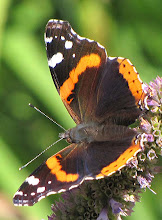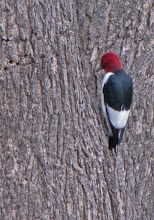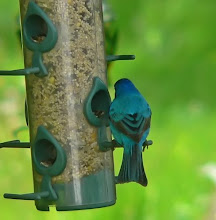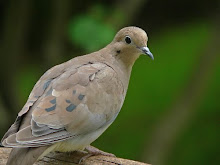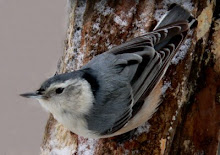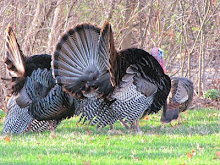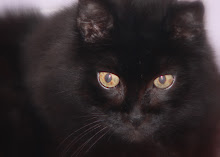 The vital force of labor [has] added materially to the highest standard of living and the greatest production the world has ever known and has brought us closer to the realization of our traditional ideals of economic and political democracy. It is appropriate, therefore, that the nation pay tribute on Labor Day to the creator of so much of the nation's strength, freedom, and leadership — the American worker. ~ U.S. D.O.L.
The vital force of labor [has] added materially to the highest standard of living and the greatest production the world has ever known and has brought us closer to the realization of our traditional ideals of economic and political democracy. It is appropriate, therefore, that the nation pay tribute on Labor Day to the creator of so much of the nation's strength, freedom, and leadership — the American worker. ~ U.S. D.O.L.Wednesday, August 27, 2008
Salute to the American Worker
 The vital force of labor [has] added materially to the highest standard of living and the greatest production the world has ever known and has brought us closer to the realization of our traditional ideals of economic and political democracy. It is appropriate, therefore, that the nation pay tribute on Labor Day to the creator of so much of the nation's strength, freedom, and leadership — the American worker. ~ U.S. D.O.L.
The vital force of labor [has] added materially to the highest standard of living and the greatest production the world has ever known and has brought us closer to the realization of our traditional ideals of economic and political democracy. It is appropriate, therefore, that the nation pay tribute on Labor Day to the creator of so much of the nation's strength, freedom, and leadership — the American worker. ~ U.S. D.O.L.American Cranberry Bush
 In the photo v. trilobum left growing beside v. opulus right.
In the photo v. trilobum left growing beside v. opulus right.Viburnum trilobum is a native American species often referred to as an American cranberry or highbush cranberry. Viburnum opulus is a non native sometimes called a snowball bush V. opulus has a spectacular May flower display but does not produce fruit.
The American cranberry is a fast growing shrub that can reach 12-15 feet high with equal width. Its May flowers are broad, white lacecaps rather than rounded. It has a graceful, airy appearance when in bloom.
Since the lower branches can become leafless and twiggy with age, I pune one of mine into a multi trunked, 15-foot shrub with lower trunks bare to about 3 feet, then branching densely. It can also be kept as a lower growing, more compact shrub maintaining foliage close to the ground. I use the latter pruning method to keep my second American cranberry more in scale with the shorter v. opulus planted beside it.
As its name implies, it produces abundant bright red fruit in late August and September. The fruit usually persists into the winter and is often still clinging to the bushes when the early migrating birds pass through the area. The fruit is safe for humans and is used in jelly. Burgundy red fall foliage provides some late season garden interest.
 Depending on how it is pruned, it can create a quick growing hedge or screen. It is hardy in the northern U. S. and well into Canada.
Depending on how it is pruned, it can create a quick growing hedge or screen. It is hardy in the northern U. S. and well into Canada.
Tuesday, August 26, 2008
Walking on the wild side
 As the lane begins to dip we stop to look at the graceful branches outlined in bright gold.
As the lane begins to dip we stop to look at the graceful branches outlined in bright gold. I rest a while and scratch my back on the bumpy pavement. Prrrrr, feels good.
I rest a while and scratch my back on the bumpy pavement. Prrrrr, feels good.
 A little farther on we find patches of wild sunflower reflecting back the remaining minutes of sunlight.
A little farther on we find patches of wild sunflower reflecting back the remaining minutes of sunlight. I show them the big puddle, dry now because no rain has fallen in all the month of August. Many tracks in the dried mud, deer, coyotes, raccoon, and mine. While it still held water, it was exciting to visit late at night.
I show them the big puddle, dry now because no rain has fallen in all the month of August. Many tracks in the dried mud, deer, coyotes, raccoon, and mine. While it still held water, it was exciting to visit late at night.  We come upon a field of Queen Ann's lace as the sunlight fades. As the woman takes pictures, Aggie and I search for field mice.
We come upon a field of Queen Ann's lace as the sunlight fades. As the woman takes pictures, Aggie and I search for field mice. 
Friday, August 22, 2008
Flowers with wings
My father gave me a beautiful book on butterflies. Now I can identify most of the common varieties I see in my garden.
 Thou didst not know,
Thou didst not know,who tottered, wandering on high,
That fate had made thee for the pleasure of the wind,
With those great careless wings.
~ Robert Frost
(Below an Atlantis Fritillary on rudbeckia in my garden. The caterpillars feed on violets)
 On my walk today,
On my walk today,I saw a butterfly.
Delicate and free,
I watched it flutter by!
Flitting here and there,
to sample Nature’s best.
Constantly in motion-
determined in it’s quest
to find the sweetest nectar;
though it didn’t linger long.
Elusive, this must be,
for it paused for just a moment,
then was gone.
~ June Kellum
(Cabbage White Butterfly introduced to North America in 1860 it had spread throughout most of the US by 1886. This is one of the most common in my area. My salvia and agastache are alive with fluttering white wings.)
 Butterfly Laughter
Butterfly Laughter In the middle of our porridge plates
There was a blue butterfly painted
And each morning we tried who should reach the butterfly first.
Then the Grandmother said: "Do not eat the poor butterfly."
That made us laugh. Always she said it and always it started us laughing.
It seemed such a sweet little joke. I was certain that one fine morning
The butterfly would fly out of our plates,
Laughing the teeniest laugh in the world,
And perch on the Grandmother's lap.
~ Katherine Mansfield

"You will be most successful if you remember
these simple rules: go slow, go low,
approach from behind, and don't cross
the butterfly with your shadow."
Butterflies do not believe in eclipses.
They believe in twilight and dusk and motion
as slow as the accumulation of dew and nectar.
They become very cross with uninvited gloom.
"Also avoid being silhouetted against the sky
in the butterfly's line of sight. If you keep low
against a background of trees or shrubs, you will be
less obvious to the insect." Elmer Fudd on tiptoe
to the tune of pizzicato ...
~ Tina Kelley
(A pair of Tiger Swallowtails nectaring on my Volcano Phlox--a very good reason to try one of these plants. )
 rocking gently on the waves...
rocking gently on the waves...of fairy wings and butterflies
to sleep, to dream of worlds
beyond the lights we see___
~Melanie Bishop
(Apologies for this poor photo. I don't see these Mourning Cloaks often and this one was very shy. Folklore legend says the larva of these butterflies is venomous--untrue of course. Mourning Cloaks are large butterflies with wingspans of over 3-inches. The adults feed on oak sap and occasionally rotting fruit. Most overwinter in this area.)
 For information on butterfly gardens:
For information on butterfly gardens:University of Illinois
May the wings of the butterfly kiss the sun.
And find your shoulder to light on.
To bring you luck, happiness and riches.
Today, tomorrow and beyond.
~ Traditional Irish
Tuesday, August 19, 2008
It's peony time
 Not bloom time of course, but time to get out your catalogs and decide which ones you want to add to your peony collection. The best time for planting or transplanting peonies is September. If you order now, you will receive your plants at about the correct time for planting.
Not bloom time of course, but time to get out your catalogs and decide which ones you want to add to your peony collection. The best time for planting or transplanting peonies is September. If you order now, you will receive your plants at about the correct time for planting.Peonies bloom at slightly different times so it is possible to extend your season by ordering early, mid and late season bloomers. Also, watch for tall and short varieties (21" to 40") and ones described as having very sturdy stems. Just to be on the safe side, order a peony cage too. That will guarantee your plant will stand up straight and not allow the heavy blooms to fall over and be ruined. Cages also prevent dogs and kids from running over newly planted bushes.
Once planted, peonies can live for a century. They aren't happy about being moved or divided, although transplanting can usually be done successfully if you are careful about weather and planting depth. Choose a site that is well drained, amend your soil with well rotted compost, and be sure not to plant them too deep.
A word of caution. Check out Garden Watchdog before ordering from any online vendor you don't know.
I'm looking at A&D's website. They have a nice selection in the $20 to $30 range, 3-5 eyes.
Khlem Song Sparrow has a good reputation for quality plants at $20 to $50, 3- 5 eyes. Newer hybrids, I didn't see many of the old standbys. Do order their wonderful catalog!
Gilbert H. Wild and Son has peonies in the $6 to $20 price range 3-5 eyes. Mostly old fashioned and more common varieties.
(I've ordered from Khlem and Wild in the past but have never bought from A&D Nursery.)
Mons. Jules Elie a medium pink double, fragrant of course:)
Mrs. F. D. Roosevelt said to be a classic. Many very fragrant, soft pink blooms per stem. Long outer petals overlapping a rosebud center. Gold Medal winner. An early bloomer. I'm almost certain this is one I will order.
 Paul Wild(A&D Nursery Photo) fragrance is harder to find in red peonies than in other colors. I really like the looks of this red.
Paul Wild(A&D Nursery Photo) fragrance is harder to find in red peonies than in other colors. I really like the looks of this red. I keep looking at Bowl of Beauty. It is an elegant peony, but the doubles or bombs are my favorites.
I keep looking at Bowl of Beauty. It is an elegant peony, but the doubles or bombs are my favorites.
Sorbet is a combination of pink and cream. Very full. No mention of fragrance so I may pass on this one. (A Gilbert H. Wild photo)

 I'm definitely geting this Edulis Superba, one of the most reliable. A very early dark pink with good fragrance. (Gilbert H Wild photo)
I'm definitely geting this Edulis Superba, one of the most reliable. A very early dark pink with good fragrance. (Gilbert H Wild photo)So, everybody, open your catalogs and let's decide.
Monday, August 18, 2008
Clematis
 I'm afraid I don't know the names of the two blues. Neither has as many flowers as the Comtesse but they are such a lovely shade of blue. They produce an occasional flower here and there after their big June flush.
I'm afraid I don't know the names of the two blues. Neither has as many flowers as the Comtesse but they are such a lovely shade of blue. They produce an occasional flower here and there after their big June flush.  I love the silvery blue on this one. I would like to add a few more next spring.
I love the silvery blue on this one. I would like to add a few more next spring. I had hoped to add photos of my Sweet Autumn clematis. Unfortunately, it looks like I may be losing it this year. It self seeded in an unfortunate place--a crack between the garage and the sidewalk. I imagine it has depleted the soil under the walkway. I hate to lose it. In late summer it transforms into a fairytail vine covered with small white stars and a heavenly scent that hangs in the air on warm evenings.
I had hoped to add photos of my Sweet Autumn clematis. Unfortunately, it looks like I may be losing it this year. It self seeded in an unfortunate place--a crack between the garage and the sidewalk. I imagine it has depleted the soil under the walkway. I hate to lose it. In late summer it transforms into a fairytail vine covered with small white stars and a heavenly scent that hangs in the air on warm evenings.Thursday, August 14, 2008
What is wrong with this wren?
Don't be alarmed. He isn't sick or injured. This photo is just for fun.
 Has he been partying all night?
Has he been partying all night?Is he staggering home at dawn with a terrible hangover?
Has his wife just thrown him out.
Are the kids driving him nuts?
Does he have the worst headache ever?
Did his girlfriend dump him for a more stud-ly wren?
Probably none of the above. He was scratching his head on the rough bark of that limb when
I caught him with the camera. Actually, I think he is enjoying a good scratch. You have to admit he looks pretty silly. The photo just seemed to need a moral story to go along with it;)
Everyone please have a great weekend.
The homeless Chickadee
 In mid April I noticed him in the wood pile. A tiny chickadee, busy popping up and down in the crevices between logs. He was there again the next day, working among the logs in the same spot as the day before.
In mid April I noticed him in the wood pile. A tiny chickadee, busy popping up and down in the crevices between logs. He was there again the next day, working among the logs in the same spot as the day before. 
The chickadee had indeed been busy. He had hollowed out a hole in the soft part of a rotten log. He was building a house for a new family, but in a very dangerous place. The log he had chosen was accessible to raccoons, squirrels, and worst of all Toby the Terrible Tabby. It was certain the chickadee family would not have survived a week in that spot.
The next day he and the missus were in and out of a decorative log cabin birdhouse that hangs in an amalanchier tree outside the dining room window. In the 5 or more years that little decoration has hung there, no birds have been foolish enough to try to nest in it. This little house, although cute, has a gaping hole that would have allowed squirrels, raccoons and both the dreaded house sparrow and European starling easy entrance.
I could not bring myself to take another home away, but I couldn’t let him stay there and be killed by a house sparrow or a starling. So, off to the wild bird supply to pick up a nice cedar nest box. It took me a long time to get it ready, add a 1.25 hole reducer, and properly mount it on a pole. A handy man could have had this house up in half an hour. It took me 4 hours. That’s how clever I am with tools.
The next morning before sunrise, the little log cabin was whisked from sight into the garage. I was pretty sure the chickadees would find the new cedar house very quickly.
When I got home from work that evening, Chickadee and the missus were both excited, flying in and out of the new post mounted, absolutely safe, cedar dwelling. I had located the new house in a scenic spot with a view of three Austrian pine threes and a lovely rugosa rose.
I kept an eye on the pair as they furnished their new home with a deep layer of soft green moss. On top they laid a fluffy blanket of cat hair (donated by my house cats). When they finished, it was as cozy as it could be. One by one eggs appeared in the hollow of moss until there were five. Whenever I checked, Mrs Chickadee had covered her eggs with the warm layer of cat fur before leaving the box. All the eggs hatched and Mom and Dad made endless trips to bring the tiny hatchlings back food. I was concerned toward the second week. The house wrens had arrived. House wrens have a horrible reputation for breaking eggs and killing the young of other birds. The hole reducer that had kept the sparrows from entering the new house would not stop a wren. Either good luck or good vigilance on the part of the chickadee parents prevented disaster and all the babies thrived and left the nest to begin their new lives.
All the eggs hatched and Mom and Dad made endless trips to bring the tiny hatchlings back food. I was concerned toward the second week. The house wrens had arrived. House wrens have a horrible reputation for breaking eggs and killing the young of other birds. The hole reducer that had kept the sparrows from entering the new house would not stop a wren. Either good luck or good vigilance on the part of the chickadee parents prevented disaster and all the babies thrived and left the nest to begin their new lives.
So the story of the homeless chickadee has the best possible ending. I would like to believe the entire family will remain in the area visiting my feeders. Come next spring, I will be ready with more nest boxes in case any chickadees find themselves homeless.
For more information on helping cavity nesting birds here are two sites to check out:
Monday, August 11, 2008
Phlox
 A new addition to my garden about this time last year, Volcano purple. It was quite small but blooming when I brought it home and planted it. This year it has tripled in size. It bloomed about three weeks earlier than my David and my tall pink garden phlox. I deadheaded it and now it is covering itself with bloom for the second time. Although I didn't keep a record like I should have, it bloomed for a considerably longer period than David.
A new addition to my garden about this time last year, Volcano purple. It was quite small but blooming when I brought it home and planted it. This year it has tripled in size. It bloomed about three weeks earlier than my David and my tall pink garden phlox. I deadheaded it and now it is covering itself with bloom for the second time. Although I didn't keep a record like I should have, it bloomed for a considerably longer period than David.Volcano is about half the height of David, approximately 18-20 inches. It is about two feet wide in its second season. In my garden there is no mildew on Volcano.
 Below is a photo of David. This has been a superb bloomer in my garden. No special care or watering. No pests, no disease.
Below is a photo of David. This has been a superb bloomer in my garden. No special care or watering. No pests, no disease. I would highly recommend both of these if you have a spot for them.
I would highly recommend both of these if you have a spot for them.~*~*~*~*~
A question for other bloggers. Are you having trouble uploading photos? I'm getting really frustrated. Today 'Blogger' would not upload anything larger than 350 x 300 which is tiny. I know some of you upload large files that can be seen in their original size by clicking on them. What is the secrete?
Tuesday, August 5, 2008
LILIES

Stargazer
The only negative thing that can be said about this lily is that it doesn't bloom long enough.
LILIES
I have been thinking
about living
like the lilies
that blow in the fields.
They rise and fall
in the edge of the wind,
and have no shelter
from the tongues of the cattle,
and have no closets or cupboards,
and have no legs.
Still I would like to be
as wonderful
as the old idea.
But if I were a lily
I think I would wait all day
for the green face
of the hummingbird
to touch me.
What I mean is,
could I forget myself
even in those feathery fields?
When Van Gogh
preached to the poor
of coarse he wanted to save someone--
most of all himself.
He wasn't a lily,
and wandering through the bright fields
only gave him more ideas
it would take his life to solve.
I think I will always be lonely
in this world, where the cattle
graze like a black and white river--
where the vanishing lilies
melt, without protest, on their tongues--
where the hummingbird, whenever there is a fuss,
just rises and floats away.





















